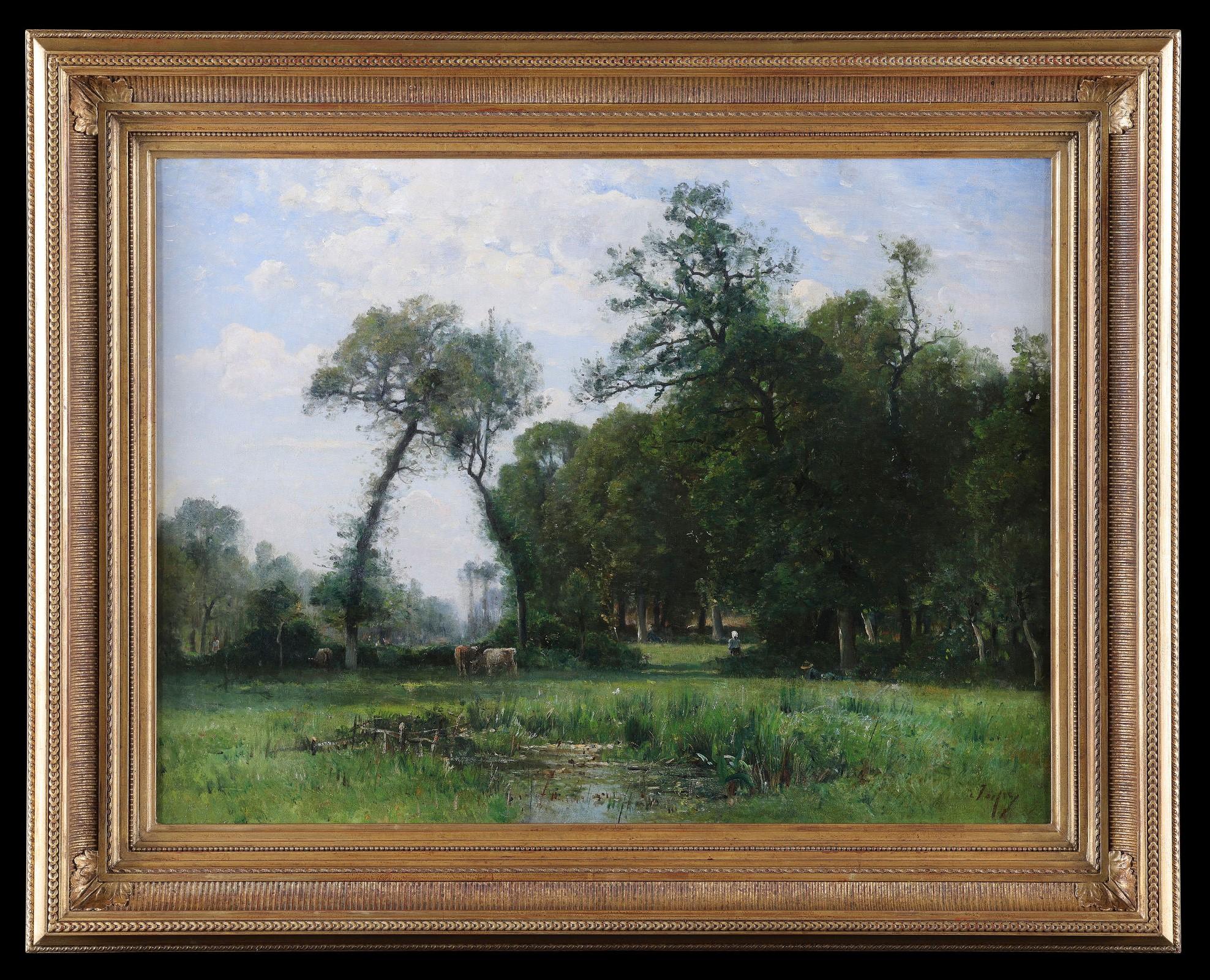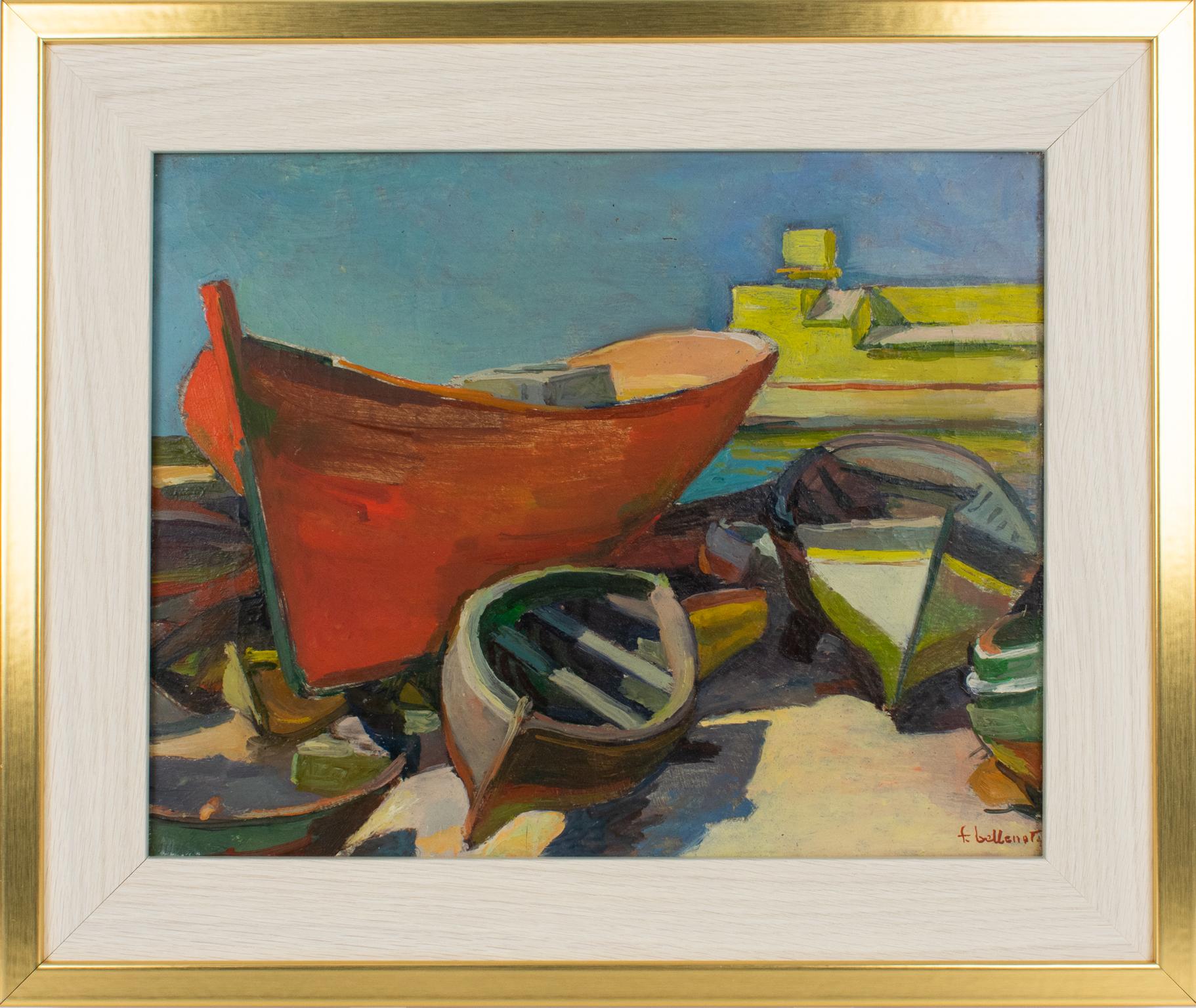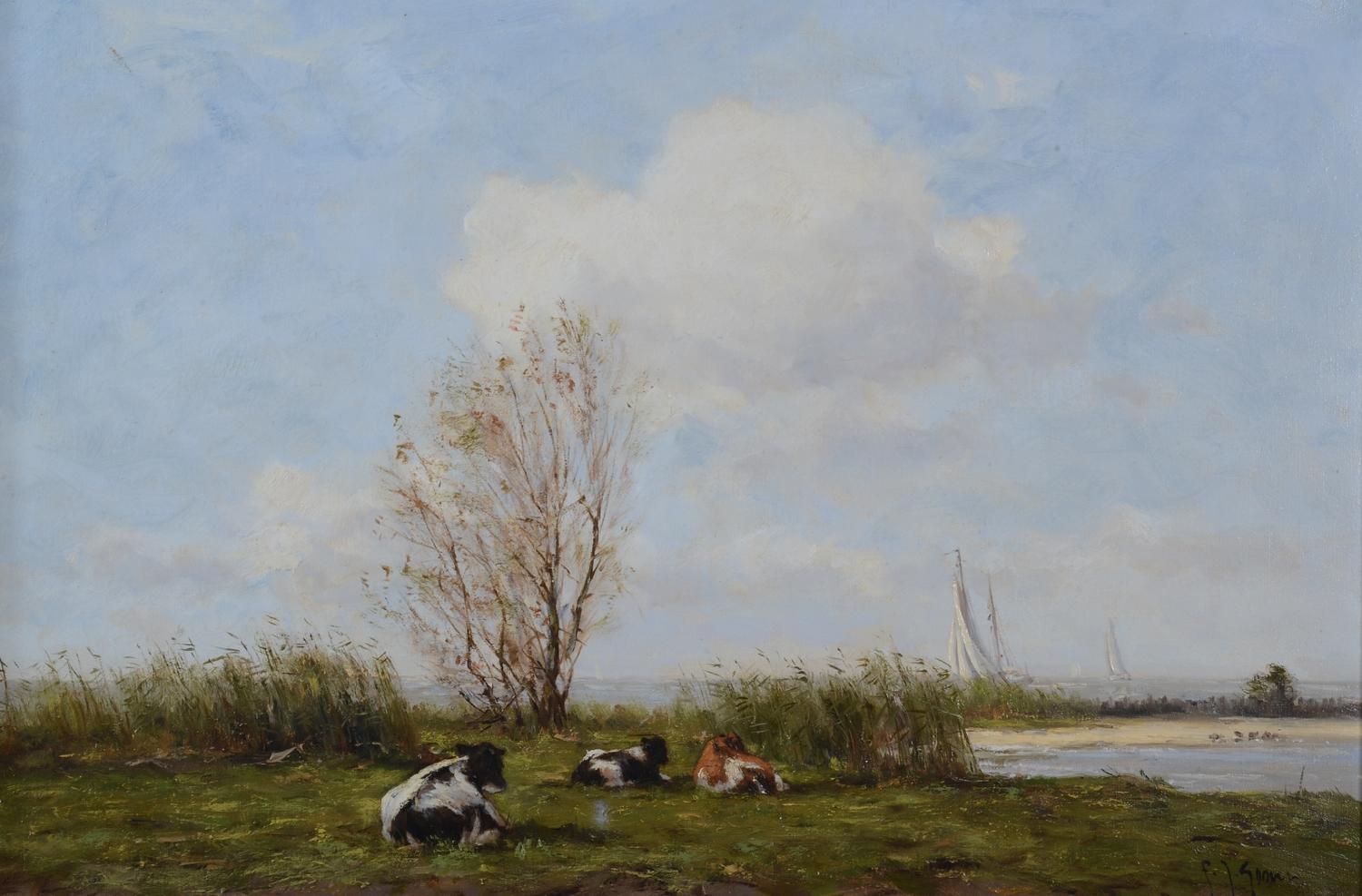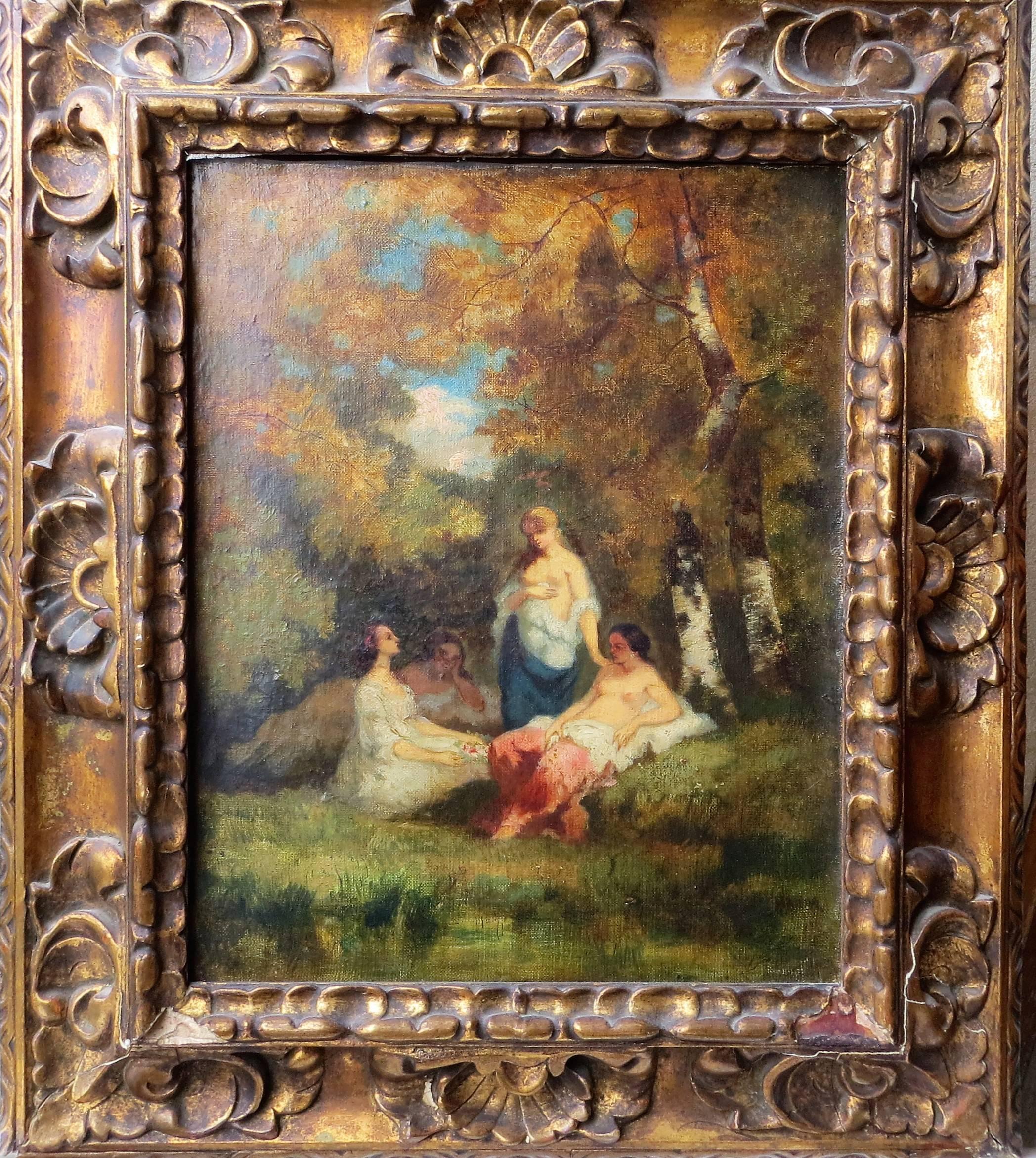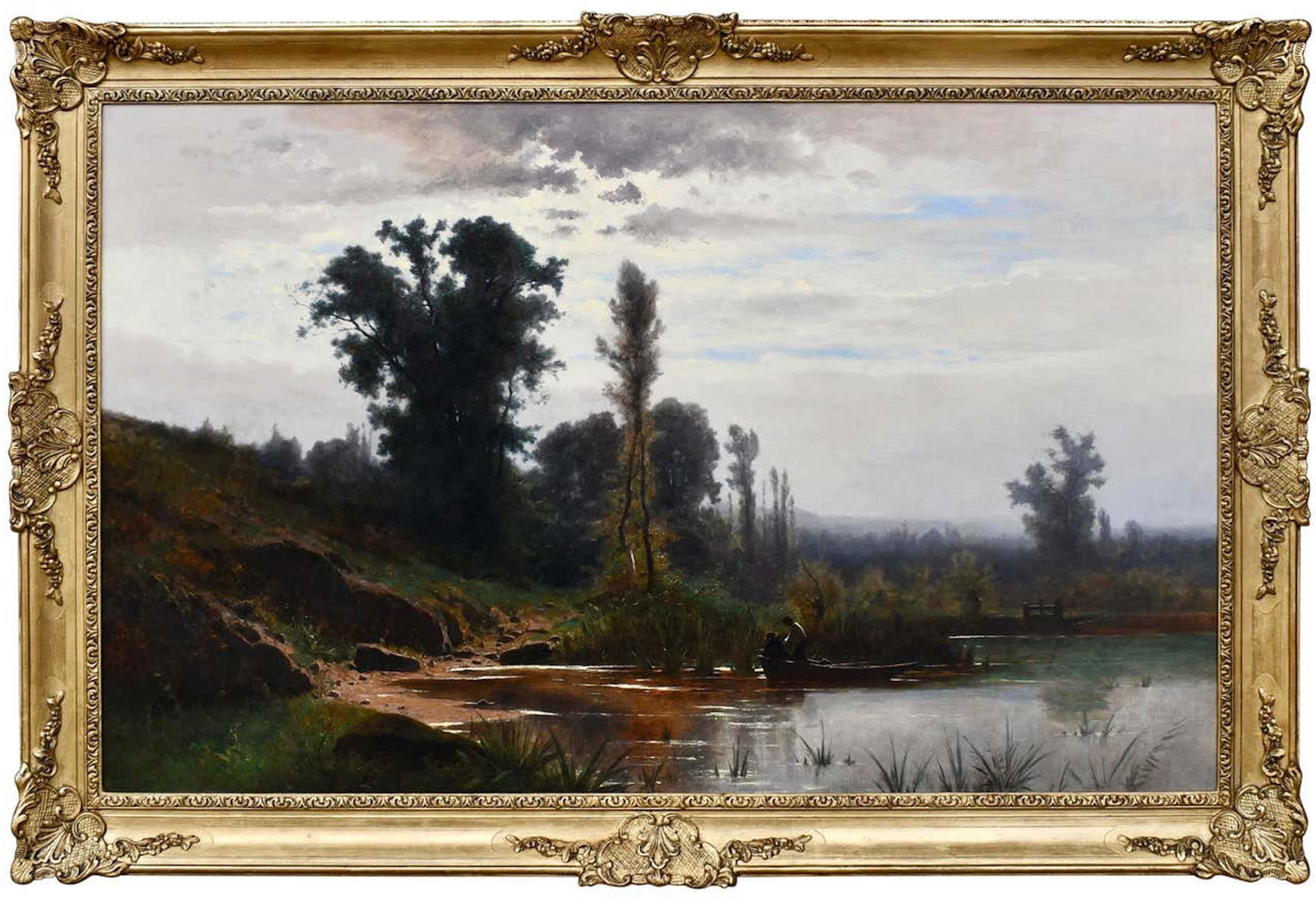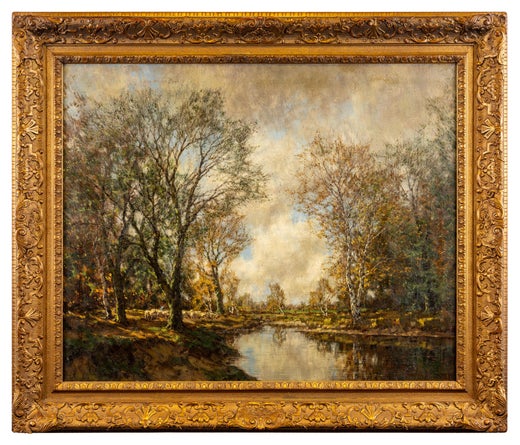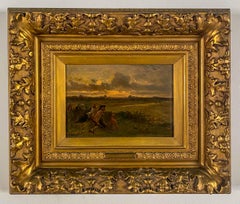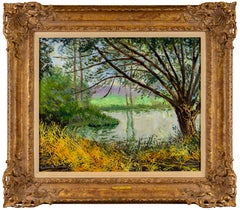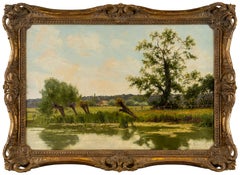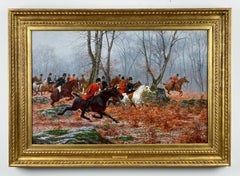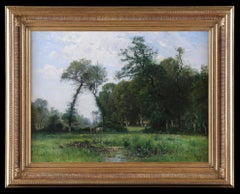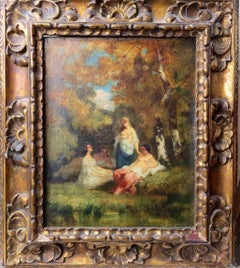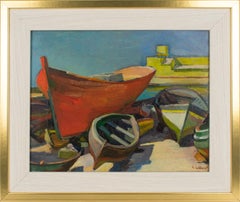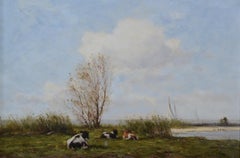Arnold Marc GorterSheep by the River
About the Item
- Creator:Arnold Marc Gorter (1866-1933, Dutch)
- Dimensions:Height: 34.5 in (87.63 cm)Width: 40.5 in (102.87 cm)
- More Editions & Sizes:34 ½ by 40 ½ inPrice: $17,400
- Medium:
- Movement & Style:
- Period:
- Condition:
- Gallery Location:Sheffield, MA
- Reference Number:Seller: 019251stDibs: LU700316139252
Arnold Marc Gorter
Arnold Marc Gorter was born in the rural farming area south of Almelo, a small town in the eastern part of the Netherlands called Twente. He was the youngest of 11 children. His mother, Geertruida ten Cate Hoedemaker, nevertheless found time to be a painter of flowers, mainly in watercolors. She taught Arnold the love of Nature and Art. His father built their (still existing) house called Friso in 1862. As Arnold decided to become a painter himself, his father urged him to obtain a drawing-master degree first. In 1884, Gorter chose to move to Amsterdam, where a new kind of school was founded that was to produce teachers to train artisans and craftsmen, designers and draughtsmen. This drawing master's normal school was located in the newly built Rijksmuseum (National Museum). After passing the final exams in 1887, Gorter indeed became a teacher at the evening classes of such a new school. In 1889, he entered the painting classes of the State-Academy. The landscape of his native countryside Twente remained his favorite, though the south-east of Amsterdam and particularly the banks of the little Gein-river offered themselves as sites for painting studies too.
In 1896, having ended his career as a school teacher, Gorter seems to have taken more time to spend on his career as a painter. He joined the secession-like artist's society Sint Lucas and became vice-president soon. A little later, he was elected president of this then rapidly growing art-club, in which not only painters but also architects, musicians and actors, as well as art-lovers were united. Here, he met Piet Mondrian among the new members. Great success was gained by the 1900 St Lucas exhibition, for which high-ranked older artists were invited. It attracted more attention from the public and the press than ever before. The much older art society Arti et Amicitiae, of which Gorter in 1889 had become a member, gave young artists fewer facilities to exhibit and had higher entry-terms to match. In 1904, he exchanged his presidency of St Lucas for the vice-presidency of Arti, to become its president many times in later years. Important was Gorter's contact with one of Amsterdam's leading art-galleries, Frans Buffa. In 1898, he had his first solo show here. This art-dealer, representing well-known painters like J.H. Weissenbruch, Is. Israëls and J. Toorop became Gorter's main representative too. Gorter's way of working was to go out in the country and make oil-sketches. The little oil-sketches were rarely exhibited, nor for sale; only sometimes given as a present.
Around 1910, Gorter's name was well known as one of the leading and most popular painters in Holland. But also in France and Germany, where he took part in the enormous yearly exhibitions of the Salon des Artistes Francais in Paris and the Internationale Kunstausstellungen in Berlin and Munich. He was successful there and sold the large canvases made just for these huge events. He received many gold medals and other rewards in Paris and Munich. It is still surprising that in France, where Luminism and Fauvism were invented at the time, Gorter's often almost monochromatic pictures of autumn, winter and night, were so highly regarded. The French State bought one of his paintings and later made him a member of the French Academy, an honor he shared with only a few other foreign painters. Reviews in France likewise were much more favorable than those in Holland. English and American art dealers now became interested too. The first exhibition of his work in America was at the 1904 Universal Exhibition in St.Louis. Through the connections, his dealer Buffa had many American galleries showed his work. Sales of his paintings in USA and Canada outnumbered his Dutch sales in the 1920s. Many reproductions were made in USA also. The 1915 “Panama-Pacific” world-fair in San Francisco was another great event. Gorter was a member of the committee organizing the Dutch art-section. Some American collectors, after having bought one of Gorter's paintings at an exhibition like this one, or those in Paris and Munich, sent a request for one, or even several more paintings. The Frye Art Museum in Seattle still has the eight landscapes its founder collected this way. Appreciation in England was less striking, although in 1914 Gorter was invited to exhibit a large painting in the Royal Academy and later in the Scottish Academy. The well known French Gallery in London regularly showed his work. After the war, a successful exhibition of Dutch art was touring England, organized by individual Dutch artists and collectors. For the first time, it included modernist painters like Mondrian and Gestel and showed a good representation of Dutch art at that time. The tour's greatest success was at the Whitechapel Art Gallery in London in 1921.
The Queen of the Netherlands, Wilhelmina, took up painting around 1919 and wanted to invite a real landscapist as a tutor or as a companion painter. Knowing Gorter from her yearly visits to the Arti-exhibitions and having bought one of his paintings already in 1913, she thought of him. In 1921, Gorter was invited to her countryside palace at Apeldoorn to paint the autumn colors together. The next year an invitation followed to accompany Wilhelmina and members of the court on a two-month cruise along Norway's coast, to go painting there. Since 1916, Gorter had acquired land near the village of Vorden in the east of the Netherlands. A country-house was built there in 1926. He had painted in Vorden regularly from 1904 on. The Vordense Beek, a little stream passing through woodlands and meadows, became a subject for hundreds of paintings.
- ShippingRetrieving quote...Shipping from: Sheffield, MA
- Return Policy
More From This Seller
View All1860s Barbizon School Figurative Paintings
Oil
Early 20th Century Barbizon School Landscape Paintings
Oil
Late 19th Century Barbizon School Landscape Paintings
Oil
1890s Barbizon School Landscape Paintings
Oil
Late 20th Century Barbizon School Landscape Paintings
Oil
Late 19th Century Barbizon School Landscape Paintings
Oil
You May Also Like
Late 19th Century Barbizon School Landscape Paintings
Oil
1870s Barbizon School Figurative Paintings
Oil
1930s Barbizon School Landscape Paintings
Canvas, Oil
21st Century and Contemporary Barbizon School Landscape Paintings
Oil
1870s Barbizon School Figurative Paintings
Oil
19th Century Barbizon School Landscape Paintings
Oil
